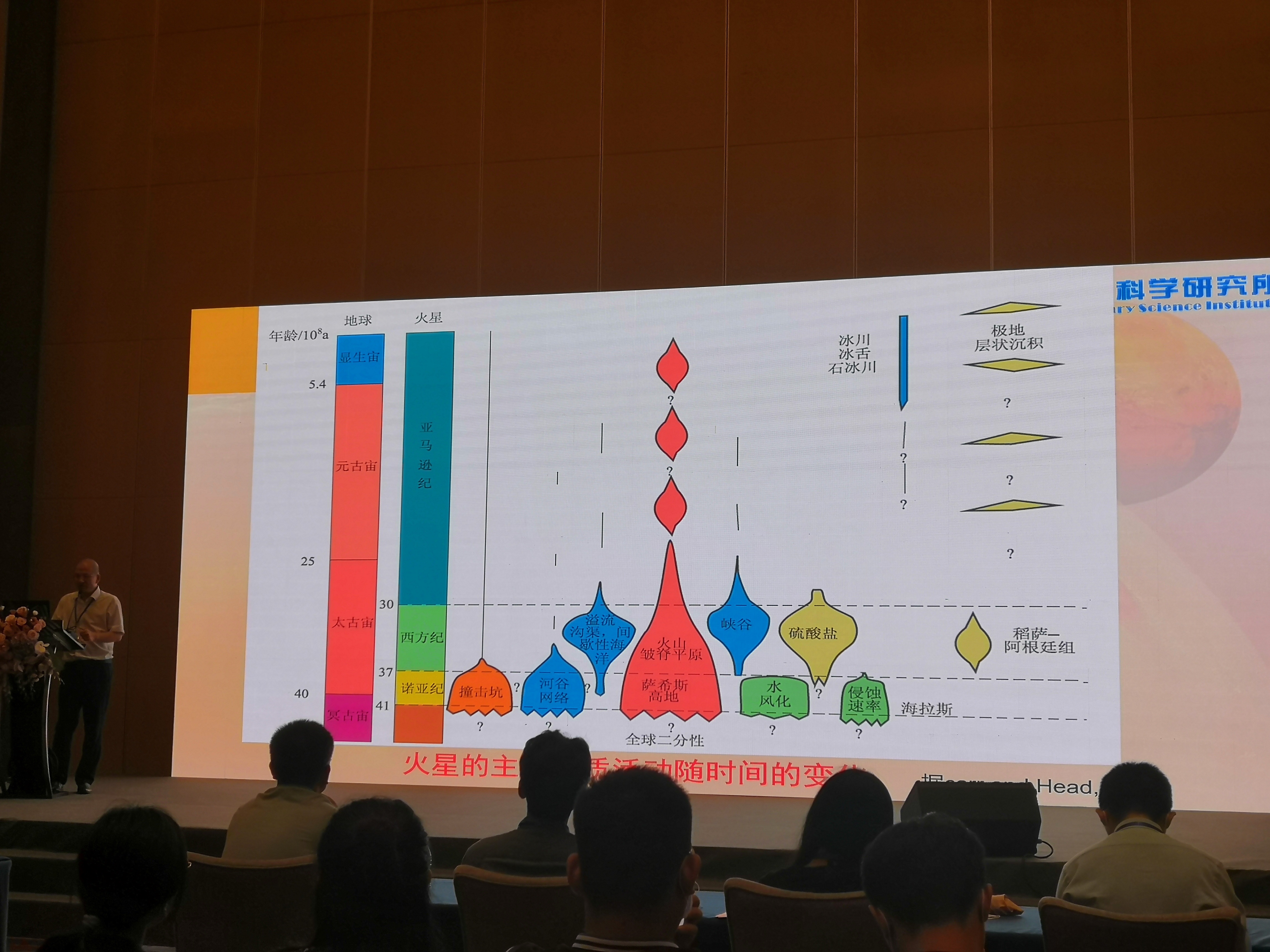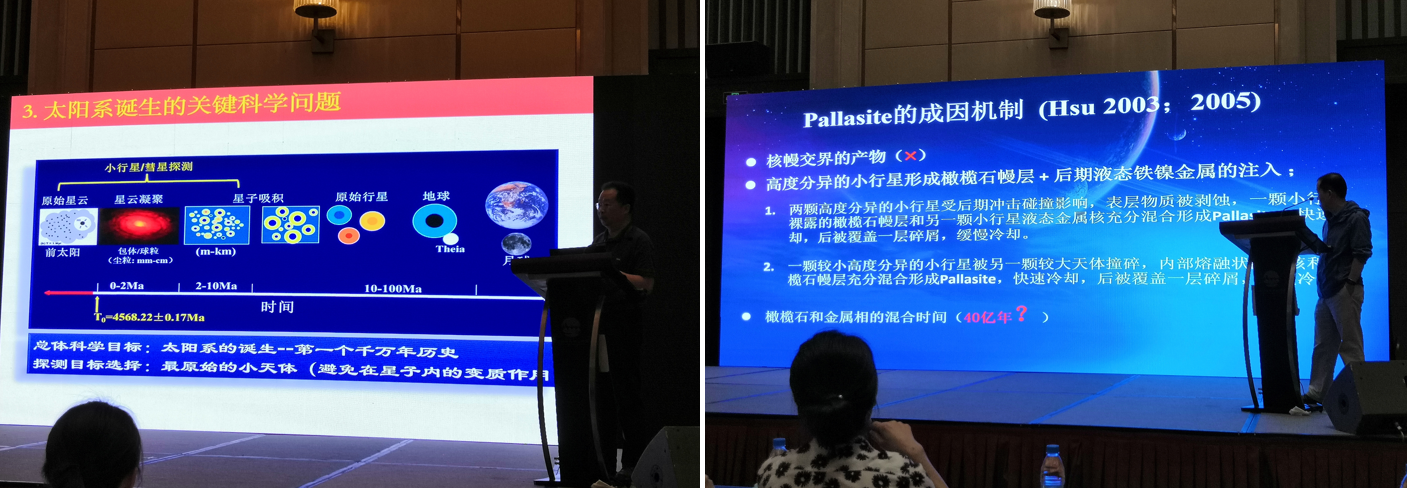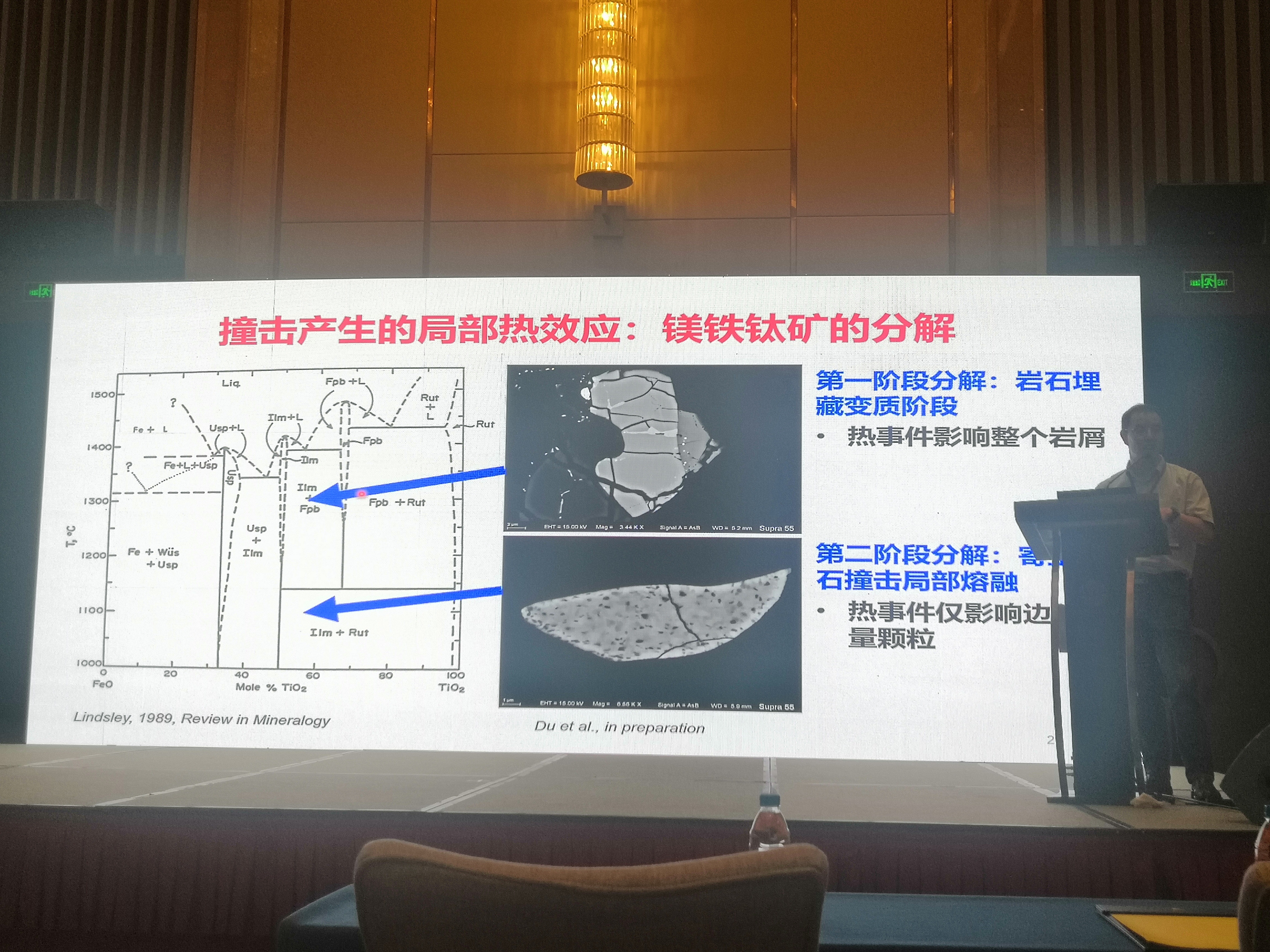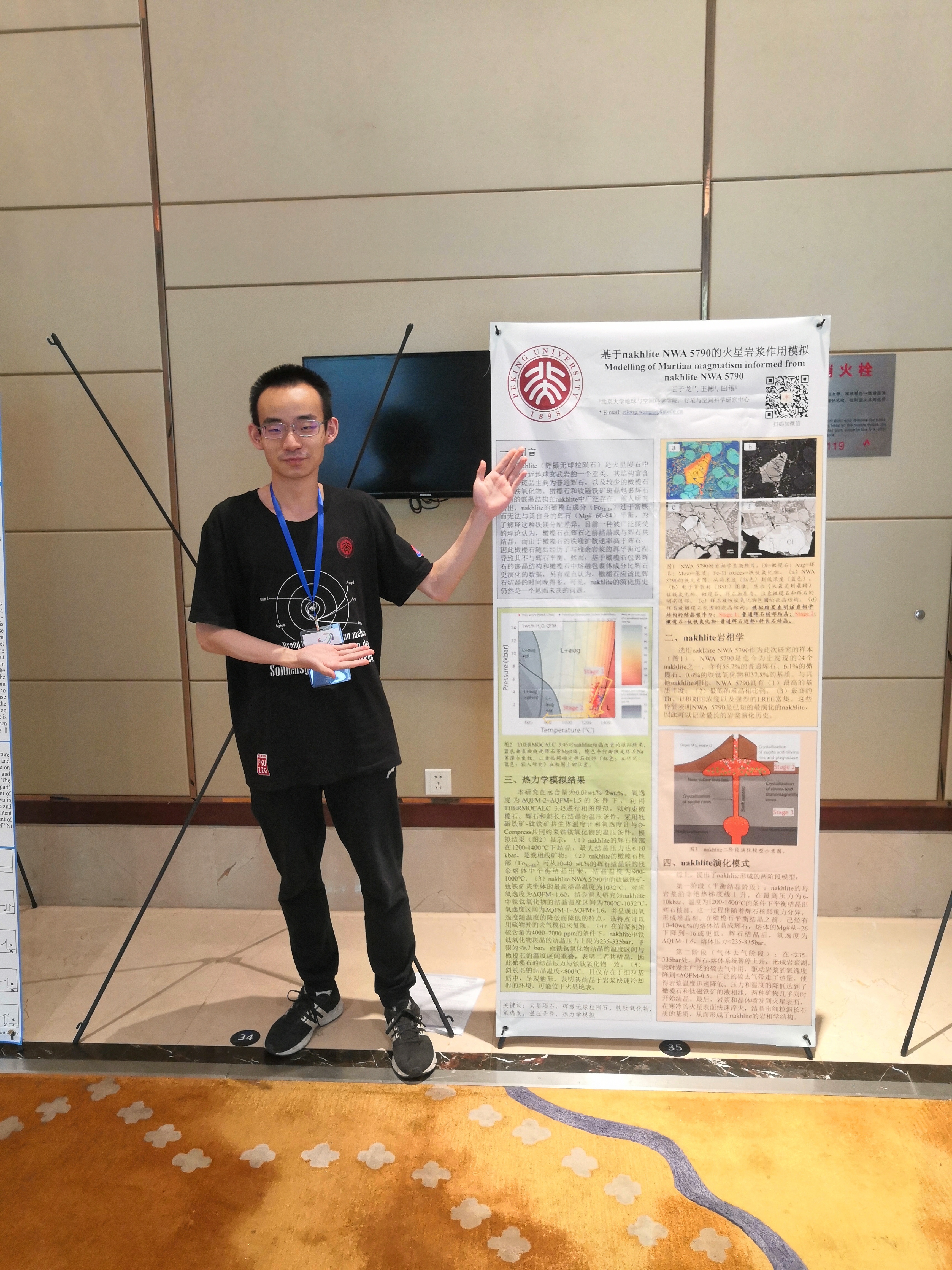The 1st National Planetary Science Conference
Date:
From June 19 to 21, 2021, the First National Planetary Science Conference was held in Suzhou, Jiangsu Province. This conference was large in scale, with an estimated attendance of over 1,000 participants.
The conference covered nearly all fields of planetary science, including planetary geology, astrobiology, magnetospheric physics and space environments, planetary and exoplanetary atmospheres, upper atmospheric physics, and planetary solid geophysics, among others. My personal focus, however, was primarily on planetary geology, particularly on its two major branches: remote sensing data and spectral interpretation, and meteorite sample research.
The planetary geology session opened with a presentation by Professor Xiao Long from China University of Geosciences (Wuhan), who summarized the current understanding of Martian geological processes and the major open questions in the field. He pointed out that around 3.1 billion years ago, surface water once existed on Mars, which later transitioned mainly to subsurface aquifers and polar ice. He also emphasized that volcanic activity during this period was intense, with Noachian–early Hesperian volcanism covering up to 30% of the Martian surface. Notably, evidence of volcanism as recent as 500–2.5 million years ago has been identified, representing some of the youngest known volcanic activity on Mars.

Professor Xiao Long is presenting on the geological history of Mars.
Subsequent talks by researchers from institutions such as the National Space Science Center, China University of Geosciences (Wuhan), and The University of Hong Kong reported new Martian geomorphological findings based on remote sensing data interpretation and comparisons with terrestrial analogs. These included: (1) ridge-like features in eastern Tempe Terra, interpreted as inverted fluvial channels; (2) Yardang landforms in the AZP region, used to infer changes in prevailing wind directions through crater dating and yardang statistics; and (3) weathering crusts on ancient Martian volcanoes. Most of these reports focused on topics such as sedimentary stratigraphy and early climate modeling, which are outside my primary area of expertise.
Another major branch of planetary geology involves the study of meteorite samples—specifically their petrography, mineralogy, and geochemistry—to investigate the evolution of parent planetary bodies (asteroids) and the early history of the solar system. This is also the field that I am most passionate about. However, this research direction attracted noticeably less attention at the conference, with only around 50 participants estimated to be present at this session—perhaps because many research groups in China do not yet have access to scientifically valuable meteorite samples.

Directors Lin Yangting (left) and Xu Weibiao (right) are delivering their plenary talks.
Even so, leading figures in Chinese meteoritics were present and actively engaged on June 20. In the morning session, two pioneers of Chinese meteoritics—Director Lin Yangting from the Institute of Geology, CAS, and Director Xu Weibiao from the Purple Mountain Observatory, CAS—gave specialized talks on chondritic and achondritic meteorites, respectively. Both presentations were excellent and insightful, and I had the opportunity to communicate with them during and after the session, which was an invaluable learning experience. They are true role models for the younger generation.

Professor Zhang Aicheng from Nanjing University is showcasing his team’s latest research progress on lunar metamorphic minerals.
Other reports came from China’s most established and systematic research groups currently working on meteorites (especially achondrites). Based on the content of their presentations, the main scientific focuses include:
- Petrographic and mineralogical characterization of newly discovered meteorites
- Petrogenesis of meteorites and their link to asteroids
- Dating of meteorites (including crystallization, mixing, metamorphic, and cosmic-ray exposure ages)
- Origin of rare minerals, microstructures, or local textures—especially those that require high-resolution tools like NanoSIMS
- Thermal and redox evolution histories of meteorites (e.g., pressure-temperature-oxygen fugacity (P-T-fO₂) conditions, burial depth, cooling rates, reheating intensity)
- Insights into parent-body structure, such as crustal thickness or magma ocean depth
However, much of the work—especially on topics 2, 5, and 6—remains preliminary. The research still tends to rely on previously established methods and models, with limited development of new theoretical tools (particularly non-experimental thermodynamic modeling) and almost no integration of high-pressure, high-temperature experimental petrology. These are precisely the directions where future deepening and innovation are most needed in this field.

Me and my poster presentation on Martian meteorite research.
At the same session, I also presented a poster on our preliminary research on Martian nakhlite meteorites. Nakhlites are a subclass of Martian meteorites structurally most similar to terrestrial basalts and are highly valuable for studying the early volcanic and geological history of Mars. However, there remain significant debates surrounding the composition of nakhlite parent magmas, their crystallization histories, and the pressures, temperatures, and fO₂ conditions during formation. In our study, we used quantitative petrographic measurements of nakhlite NWA 5790 and THERMOCALC thermodynamic modeling to test and constrain all previously proposed nakhlite parent magma compositions over the past 40 years. We also determined the temperature and fO₂ of Fe-Ti oxides crystallization, using Fe-Ti oxide thermometry and oxybarometry, as well as D-Compress degassing modeling. Based on these constraints, we proposed a two-stage evolutionary model for nakhlite magmas prior to eruption:
- The parent magma crystallized pyroxenes at ~1250–1400°C and <6–10 kbar, underwent gravitational settling during rapid ascent, and eventually formed a magma lake at near-surface conditions (~235–335 bar)
- Upon forming the magma lake, the magma cooled to ~1000°C, with an initial fO₂ of ΔQFM +1.6, and began co-crystallizing olivine and Fe-Ti oxides, accompanied by extensive sulfur degassing
Finally, the magma erupted to the surface, rapidly cooled, and crystallized a fine-grained plagioclase-rich groundmass with Fe-enriched rims on both olivine and pyroxene phenocrysts.
